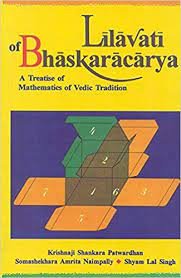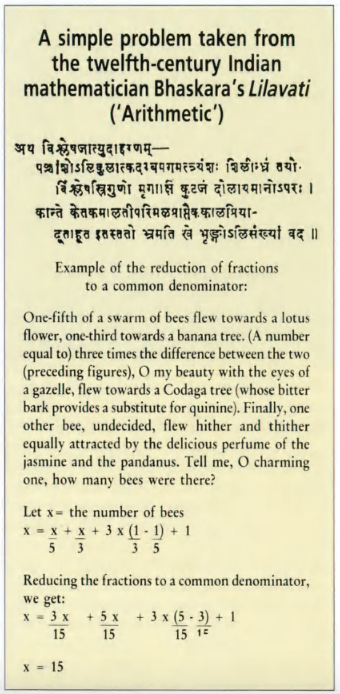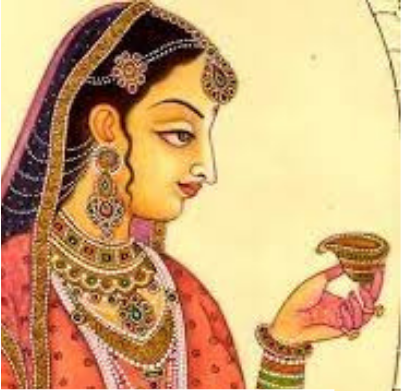introduction
The history of mathematics is filled with fascinating stories of brilliant minds who contributed to our understanding of numbers, geometry, and calculus. One such mathematician is Lilavati, a trailblazer of ancient India who lived during the 12th century. Lilavati is known for her significant contributions to the field of mathematics, particularly in the study of arithmetic and algebra. Her book, also titled Lilavati, is considered a masterpiece and was widely used as a textbook in India for centuries. Despite being a woman in a male-dominated field, Lilavati was able to break barriers and make significant contributions to the world of mathematics. In this post, we will explore the life and achievements of this remarkable mathematician, and how her work has influenced modern-day mathematics.
“Ancient Indians Loved It, & Made Great Discoveries Too”
1. Introduction to Lilavati and her work
Lilavati was a pioneering mathematician who lived in ancient India during the 12th century. She wrote a book called “Lilavati” which was a comprehensive guide to mathematics and covered a wide range of topics such as arithmetic, algebra, geometry, and trigonometry. The book was written in verse form and Lilavati used interesting and relatable examples to explain mathematical concepts, making it easy to understand for the common people of that time.
Lilavati’s book was a trailblazer in the field of mathematics and was used as a reference by many other mathematicians of that time. It was also translated into many languages and was widely circulated. Lilavati’s contribution to the field of mathematics is immense and it is a testament to her genius that her work is still being studied and admired by mathematicians all over the world.
2. Lilavati’s life and background
Lilavati was a remarkable woman who lived in ancient India and made significant contributions to the field of mathematics. She was born in the 12th century CE to a family of scholars and mathematicians. Her father, Bhaskara II, was a well-known mathematician and astronomer who had authored several influential works, including the Siddhanta Shiromani and the Lilavati.
Lilavati was named after her father’s famous treatise on mathematics, which was dedicated to her. Her father recognized her talent and encouraged her to study mathematics from a young age. Under his guidance, she became proficient in various branches of mathematics, including arithmetic, algebra, geometry, and trigonometry.
Lilavati’s mathematical prowess was not limited to theoretical knowledge. She was also skilled in practical applications of mathematics, such as solving complex problems related to astronomy, timekeeping, and architecture. Her contributions were not only academic but practical as well, and her work was highly valued by the scholars and practitioners of her time.
Despite the challenges faced by women in ancient India, Lilavati’s talent and dedication made her a trailblazer in the field of mathematics. Her work continues to inspire scholars and mathematicians around the world, and she remains a symbol of the power of education and determination to overcome obstacles.

3. Lilavati’s contributions to mathematics
Lilavati, a renowned mathematician of ancient India, made significant contributions to the field of mathematics. Her book “Lilavati” is an excellent example of her brilliant work. It is a treatise on arithmetic, geometry, and algebra. She wrote this book in Sanskrit, which was the language of scholars during her time. puzzles from Lilavati
One of Lilavati’s significant contributions to mathematics was her work on indeterminate equations. She devised formulas and methods to solve equations with multiple unknowns, which were used for centuries to come. She also made significant contributions to geometry, including the calculation of areas and volumes of different shapes.
In addition to her mathematical contributions, Lilavati was also known for her accurate calculations related to astronomy. She was one of the few scientists of her time who accurately calculated the exact time of solar and lunar eclipses. Her works became the foundation of many later works on astronomy.
Lilavati’s contributions to mathematics were significant and groundbreaking. Her works have been used for centuries and continue to inspire mathematicians to this day. She was a true trailblazer of her time, and her legacy lives on.
Oh! You, auspicious girl with the enchanting eyes of a fawn, Lilavati, if you have well understood the above methods of multiplication, tell me what is the product of 135 and 12? Also, tell me what number you will obtain when the product is divided by 12.
4. The impact of Lilavati’s work on mathematics and science
Lilavati’s contributions to mathematics and science were significant and far-reaching. Her work was not just limited to arithmetic and algebra but also included geometry and trigonometry. She made important discoveries, such as the derivation of the volume of a sphere, which was a groundbreaking achievement in her time.
Her book, Lilavati, was widely recognized as a seminal work in the field of mathematics and was even translated into Persian and Arabic. Her work was also influential in the development of astronomy and cosmology, as it provided a framework for the calculation of planetary movements and the prediction of eclipses.
Furthermore, Lilavati’s work had a lasting impact on the education and empowerment of women, particularly in the field of mathematics. She was a trailblazer for women in a male-dominated field, and her work served as an inspiration for generations of women mathematicians.
Overall, Lilavati’s contributions to mathematics and science were truly remarkable and her legacy continues to inspire and influence mathematicians and scientists around the world. Her work serves as a testament to the power of curiosity, perseverance, and dedication in the pursuit of knowledge and discovery.
5. The cultural significance of Lilavati’s achievements
Lilavati’s achievements have a deep cultural significance in India. Mathematics has been a vital part of Indian culture for thousands of years, and Lilavati’s contributions only add to the rich history of mathematical knowledge in India. Her work was not only groundbreaking for its time but also paved the way for future advancements in mathematics.
Moreover, Lilavati’s work was not limited to mathematics. She was also known for her contribution to Indian astronomy, which was closely related to mathematics. Her work in both fields helped advance science and technology in India and had a profound impact on Indian culture as a whole.
In addition to her contributions to mathematics and astronomy, Lilavati’s story has inspired women in India to pursue education and careers in STEM fields. She is considered a role model for young girls and women who aspire to excel in science and mathematics.
Thus, Lilavati’s achievements are not only significant in the context of mathematical and scientific advancement but also in terms of cultural and social progress. She is a true trailblazer who continues to inspire generations of Indians to this day.
6. The challenges Lilavati faced as a woman in mathematics
As a woman in mathematics during her time, Lilavati faced numerous challenges. First and foremost, women were not allowed to attend schools or universities, which deprived them of formal education. As such, Lilavati had to rely on her father, who was a well-known mathematician himself, to teach her the subject. This was a great opportunity for Lilavati, but it was also a privilege that was not extended to most girls at the time.
Additionally, Lilavati faced discrimination and prejudice from other male mathematicians. She was often overlooked and dismissed because of her gender, despite her brilliance and accomplishments. This made it difficult for her to gain recognition for her work and to be taken seriously as a mathematician.
Despite the obstacles she faced, Lilavati persisted and continued to pursue her passion for mathematics. She worked hard to improve her skills and knowledge, and her dedication paid off. Her mathematical treatise, Lilavati Ganitam, is still considered a masterpiece today and is widely studied by mathematicians worldwide.
Lilavati’s story is a testament to the power of determination and passion in the face of adversity. Despite the challenges she faced as a woman in mathematics, she never gave up, and her work continues to inspire and influence mathematicians even centuries later.
7. The legacy of Lilavati’s work in modern mathematics and science education
Lilavati’s legacy has had a significant impact on modern mathematics and science education. Her work paved the way for the development of algebra and arithmetic, which are crucial components of modern mathematics. Her methods of teaching and problem-solving have been studied and adapted by modern educators, and her contributions to the field have been recognized and celebrated.
Lilavati’s work is an inspiration to women in STEM fields, as she was a pioneer in a male-dominated field during a time when women’s contributions to science and mathematics were often overlooked. Her legacy has helped to break down barriers and inspire other women to pursue careers in STEM fields.
Her work has also influenced the development of modern computer science, as many of the algorithms and techniques used in computing are based on mathematical principles developed by Lilavati and other ancient mathematicians. Her contributions to the field of mathematics continue to be relevant and influential, even in the modern era.
In conclusion, Lilavati’s work has had a lasting impact on mathematics and science education, and her legacy continues to inspire and influence modern educators and students alike. Her contributions to the field of mathematics have paved the way for modern advancements, and her story serves as an inspiration to women in STEM fields around the world.
8. Celebrating Lilavati’s achievements and recognizing women in STEM fields
Lilavati was a remarkable mathematician who lived in ancient India and made groundbreaking contributions to the field of mathematics. Her accomplishments are truly inspiring, and it’s important to celebrate them and recognize the incredible achievements of women in STEM fields.
Throughout history, women have been underrepresented in the fields of science, technology, engineering, and mathematics. Despite facing countless obstacles and barriers, women like Lilavati have made significant contributions to these fields, and their contributions continue to impact society today.
By celebrating Lilavati’s achievements and recognizing the accomplishments of other women in STEM fields, we can inspire the next generation of women to pursue their passions and make a difference in the world of mathematics and beyond.
It’s important to provide young girls with role models like Lilavati, who can show them that anything is possible with hard work and determination. By promoting diversity and inclusion in STEM fields, we can create a better, brighter future for everyone. Let’s celebrate Lilavati’s legacy and continue to support women in STEM fields around the world.
9. Resources for learning more about Lilavati and mathematics in ancient India
If you’re interested in learning more about Lilavati and the history of mathematics in ancient India, there are several resources available to you.
One great resource is the book “Lilavati’s Daughters: The Women Scientists of India” by Rohini Godbole. This book not only covers the life and work of Lilavati but also introduces readers to other women who made significant contributions to science and mathematics in India throughout history.
Another useful resource is “The Crest of the Peacock: Non-European Roots of Mathematics” by George Gheverghese Joseph. This book provides a comprehensive overview of the history of mathematics in various cultures, including India, and discusses the contributions of mathematicians like Lilavati in shaping the field.
For those interested in pursuing a deeper understanding of mathematics in ancient India, there are also online courses and academic programs available. The University of Delhi, for example, offers a course on the history of mathematics in India that explores the work of Lilavati and other mathematicians of the time.
Additionally, there are many websites and online resources available that provide information about Lilavati and mathematics in ancient India, such as the website of the Indian National Science Academy and the Indian Science News Association. By exploring these resources, you can gain a greater appreciation for the groundbreaking work of Lilavati and the rich history of mathematics in ancient India.
10. Conclusion and reflections on Lilavati’s inspiring legacy
Lilavati’s legacy as a trailblazing mathematician of ancient India is truly inspiring. Her contributions to the field of mathematics, particularly in the areas of arithmetic, algebra, and geometry, were groundbreaking and continue to be relevant even today. Her work, the Lilavati, is a testament to her intelligence, curiosity, and dedication to her craft.
What stands out most about Lilavati is her determination to overcome adversity and pursue her passion for mathematics in a patriarchal society that did not always value women’s education. Her story serves as a reminder that love and talent know no gender, race, or social status barriers. Lilavati’s work has transcended time and geography, and her legacy continues to inspire many, particularly women, to pursue their passions and break down barriers in their respective fields.
As we reflect on Lilavati’s life and work, we are reminded of the importance of recognizing and celebrating the contributions of women in mathematics and science. It is vital to encourage and support the next generation of Lilavatis, who will continue to push the boundaries of knowledge and inspire us all. In conclusion, Lilavati’s legacy will continue to inspire mathematicians and scientists for generations to come, and her contributions to the field of mathematics will always be remembered and celebrated.






 2023
2023  by us | All Rights Reserved
by us | All Rights Reserved